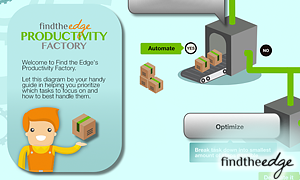 As you sit staring at the screen while composing an email, sales page or blog post, it can be very difficult to take a step back and imagine the people who are actually going to come into contact with what you're doing. If you don't have a clear vision of your audience, you're going to be shooting in the dark and, chances are, your conversion rates will be weak at best.
As you sit staring at the screen while composing an email, sales page or blog post, it can be very difficult to take a step back and imagine the people who are actually going to come into contact with what you're doing. If you don't have a clear vision of your audience, you're going to be shooting in the dark and, chances are, your conversion rates will be weak at best.
Getting to know your audience is one of the most important things you can do. Vague demographic groups, or stereotypes, aren't enough – you need to get into their heads and under their skin to gain an understanding of how they think and what motivates them.
This may sound like a tricky thing to do but, in reality, it's surprisingly simple. All you need to do is create buyer personas (also known as customer personas).
Simply put, a buyer persona is a description of the person you're looking to engage with. It will help you to gain an understanding of how to push their buttons, and the best ways to motivate them into taking action.
Having completed an accurate buyer persona, you'll find connecting with your target audience is much easier, and your efforts are a hell of a lot more effective.
Creating a buyer persona
So how do you go about putting a buyer persona together?
The simplest way is to survey your customers. I've found the best time to do this is immediately after sign up, whilst they are still hot. You can sweeten the deal by offering them an incentive or a bonus, but make sure it’s there to motivate them to be truthful, rather than to simply complete the survey.
You really want to get an idea of who they are, what their values are, and what they fear.
The results will be an invaluable resource that will help you add value and build a relationship in the most efficient and effective way, consistently aiming your service at their wants and needs. The questionnaire should enquire about information such as their:
- Age
- Gender
- Marital Status
- Job
- Education
This information alone will be useful, but you should aim to dig a little deeper. Asking questions similar to the following will help you to get a sense of who they really are, and move away from dry statistics:
- Who do they most admire?
- What are their aspirations?
- What do they fear most?
- What's their favourite way to spend time?
Don't make your questionnaire too long, or people will ignore it. Also, remember not to include people who haven't actually converted – they will only dilute your findings.If you don't like the idea of a questionnaire, you could choose to gather the information from casual meetings, focus groups, interviews or a combination of the above – make sure you include a broad spread of your customers, however.
Using the information collected
If all goes well, you'll end up with a stack of data about the people who you've successfully sold your products or services to in the past.
Look for trends and patterns within this data. You'll then be able to use the information to create your buyer persona. This can serve as a short description, or – as I'd recommend – you can clarify things even further by creating a fictional character.
Give the persona a name, job title and invent their family history, hobbies and plans for the future – all based on what you've discovered from your research. What's the last thing they think of at night, and what are their daily challenges? Add as much detail as you can.
Once this is complete, there will be no room for confusion or fuzzy thinking. You'll know exactly who you're looking to engage, and so will everyone in your team.
Depending on the business – or if you're selling multiple products – you may need to create a variety of these personas.
Like people, personas will change over time. Allow them to evolve as you gain more data about your customers.
Your collection of personas will be an effective ally for attracting future prospects, and serving them properly around their pain points and motivations. They will help you take your conversion rates to the next level, by developing laser-focussed attraction strategies.





